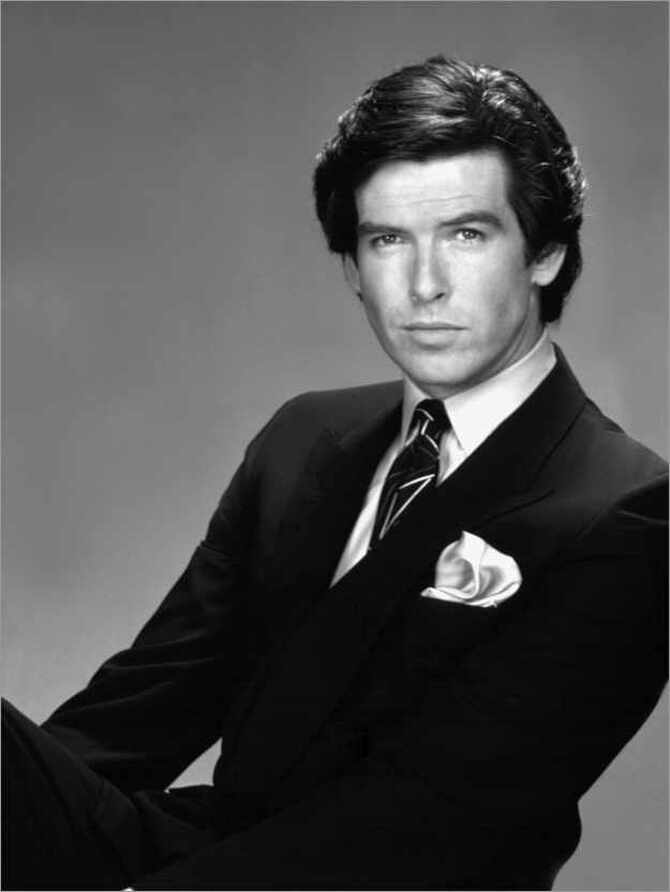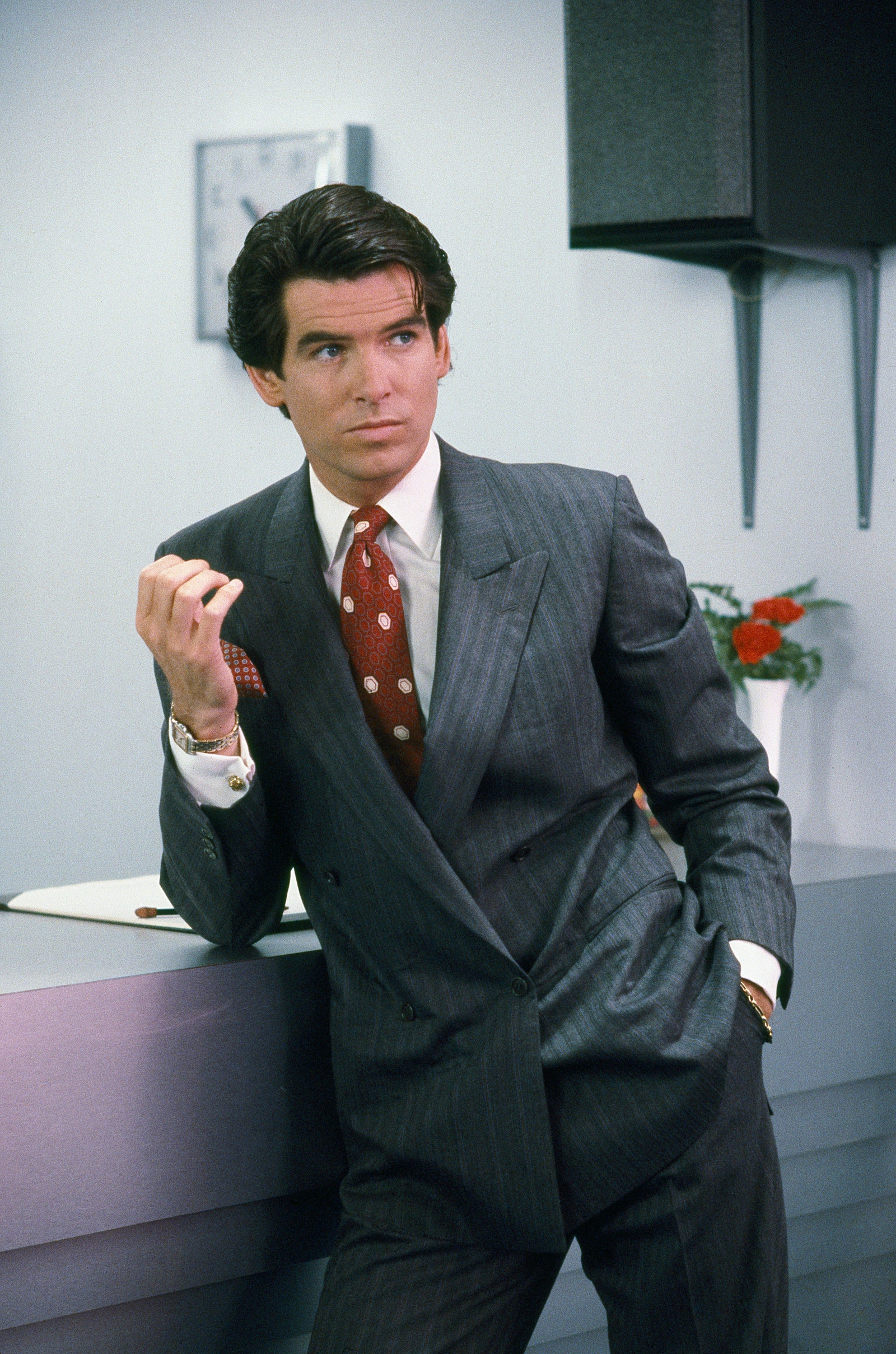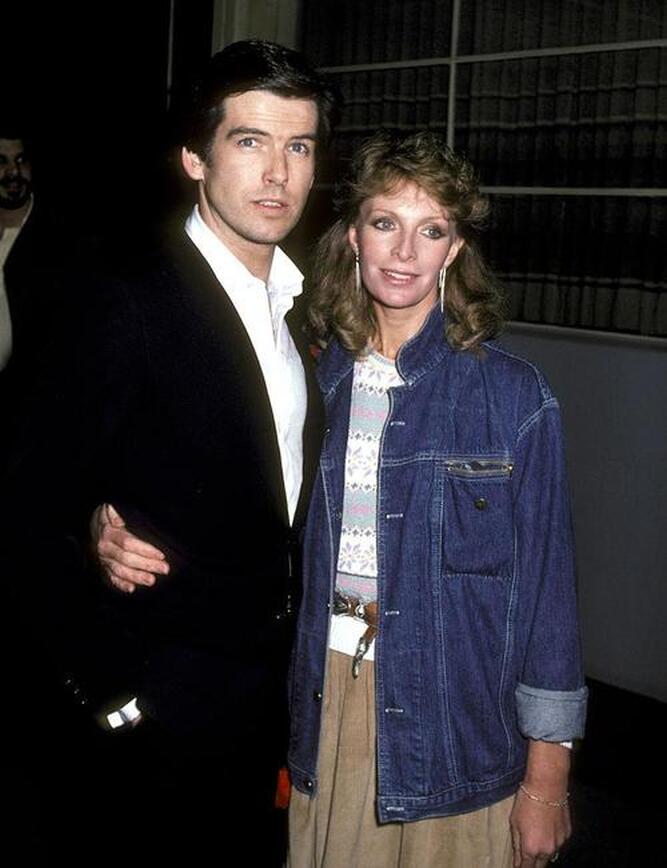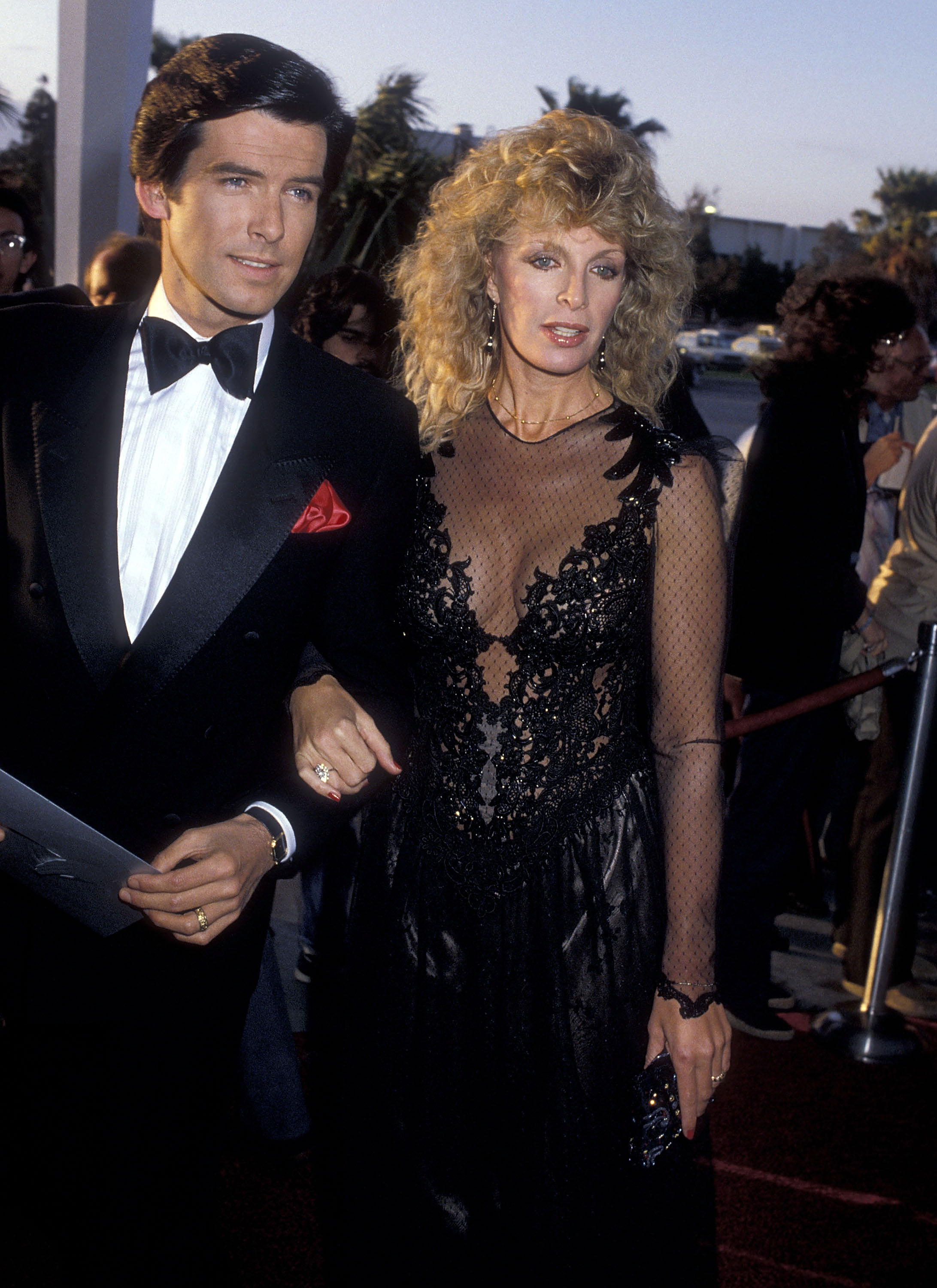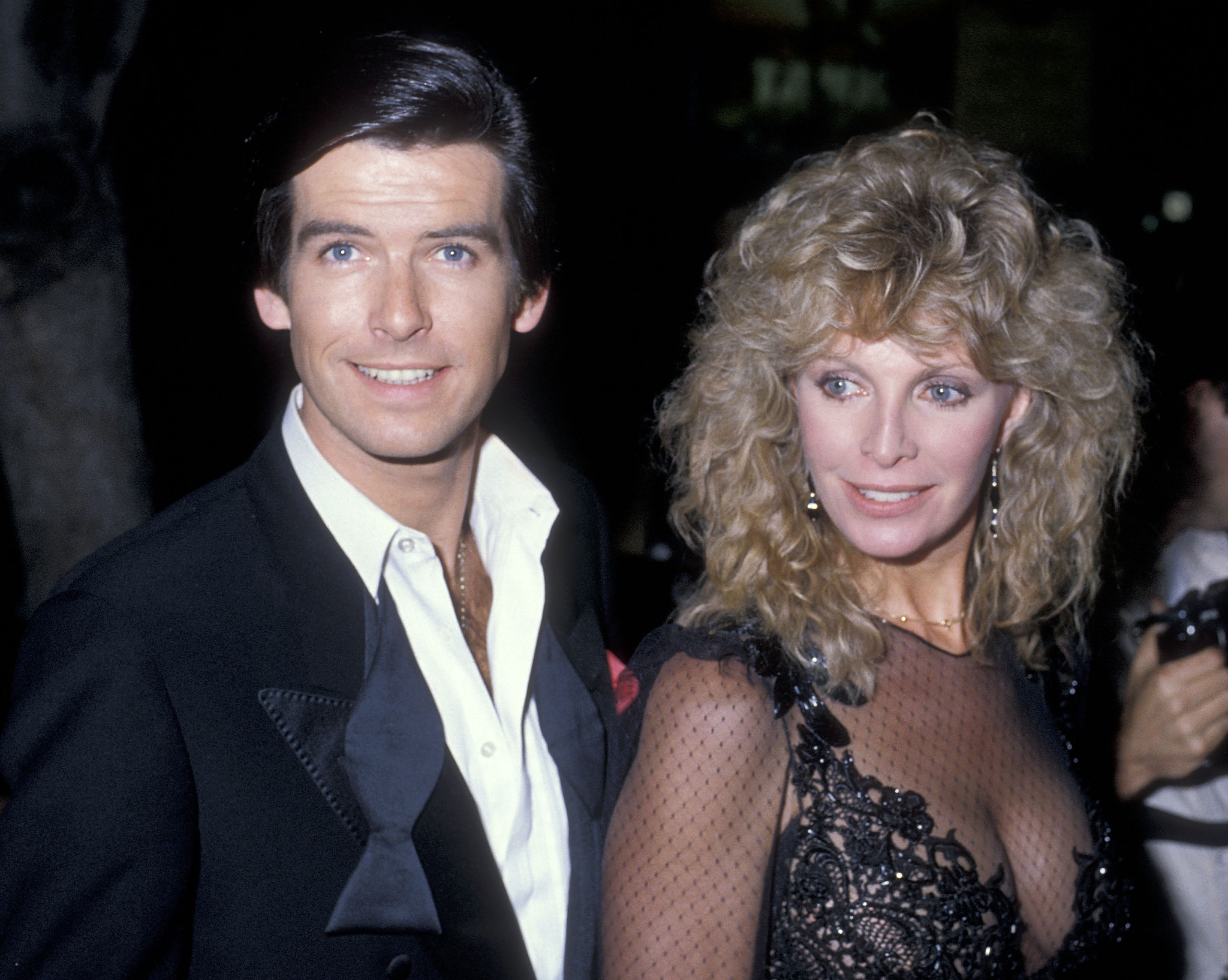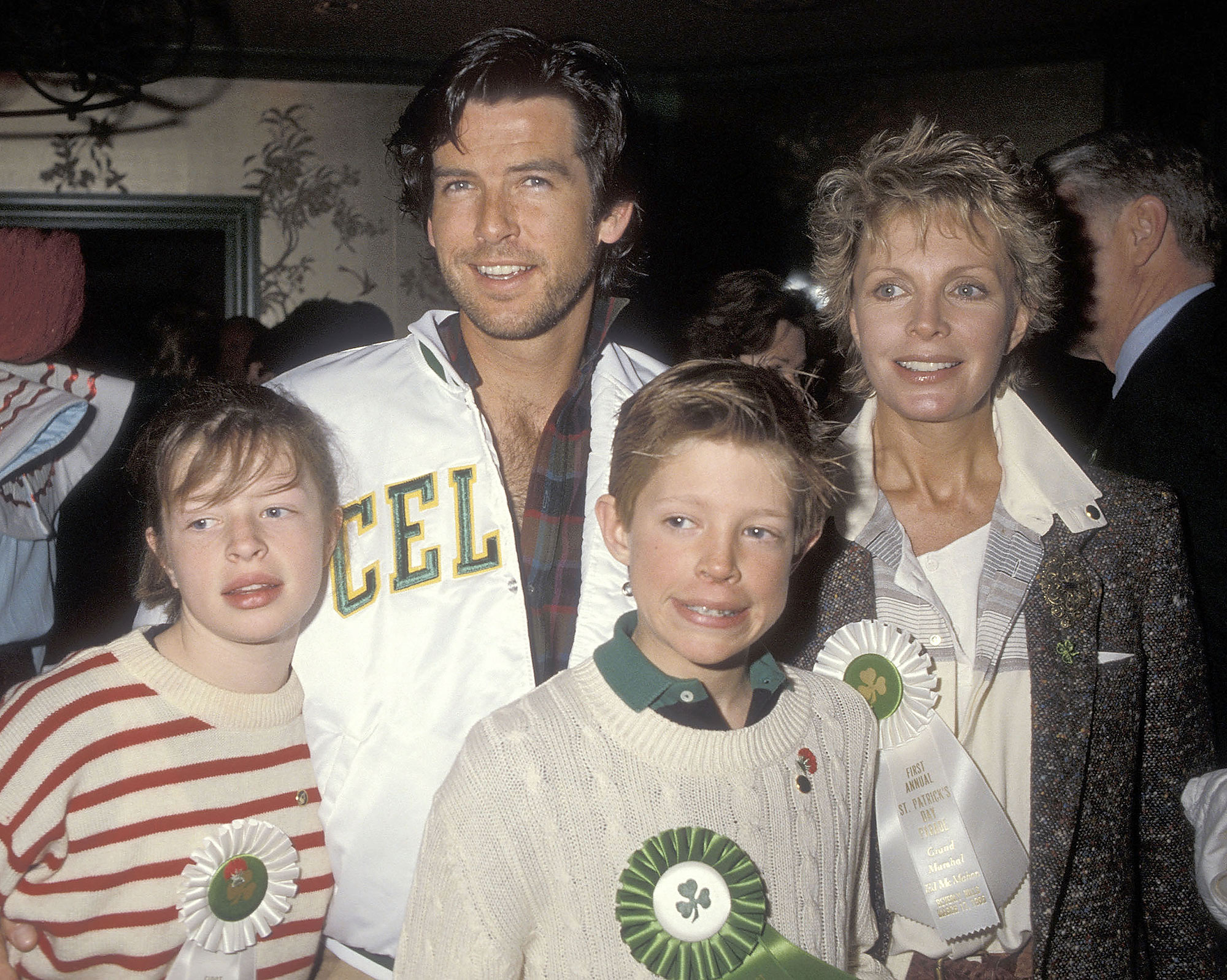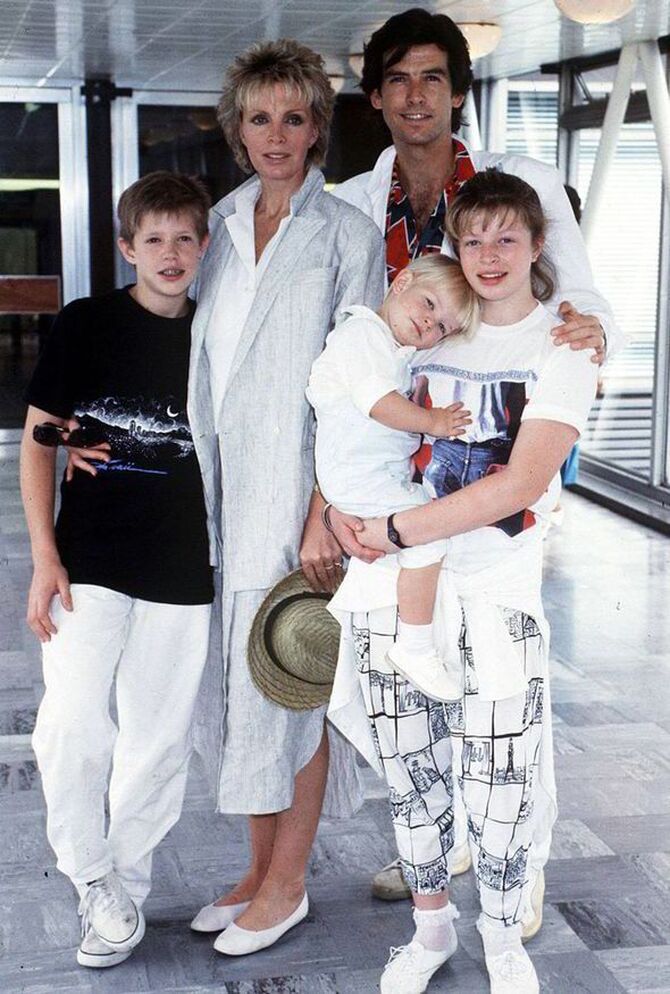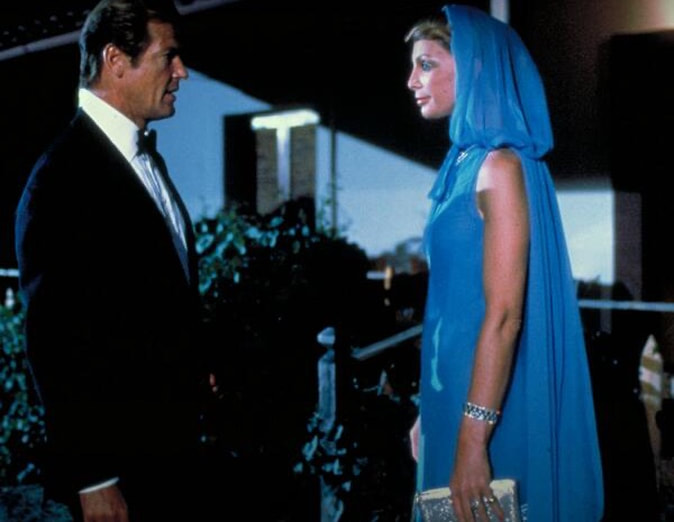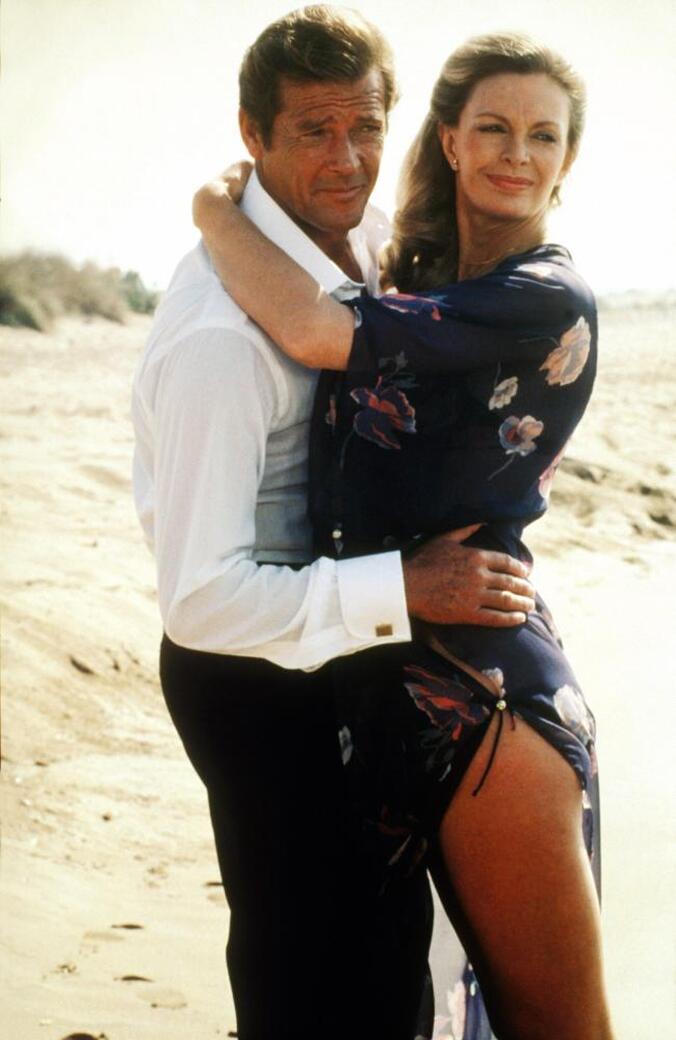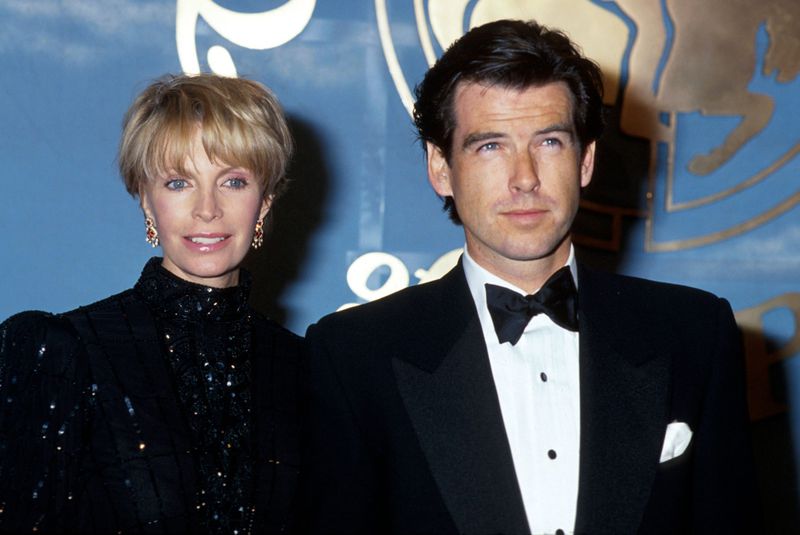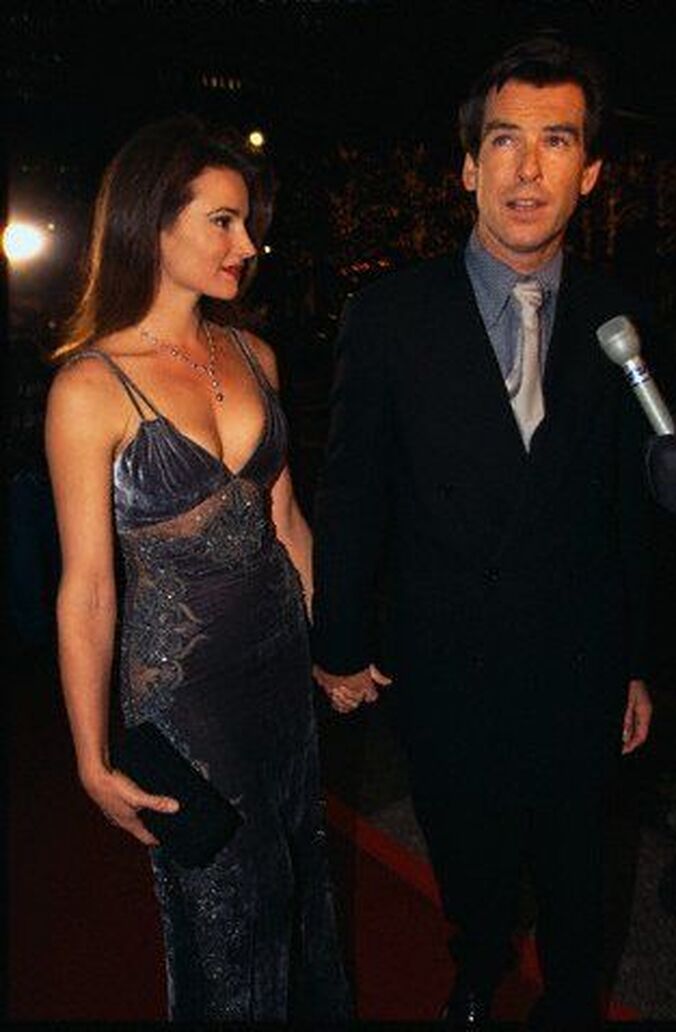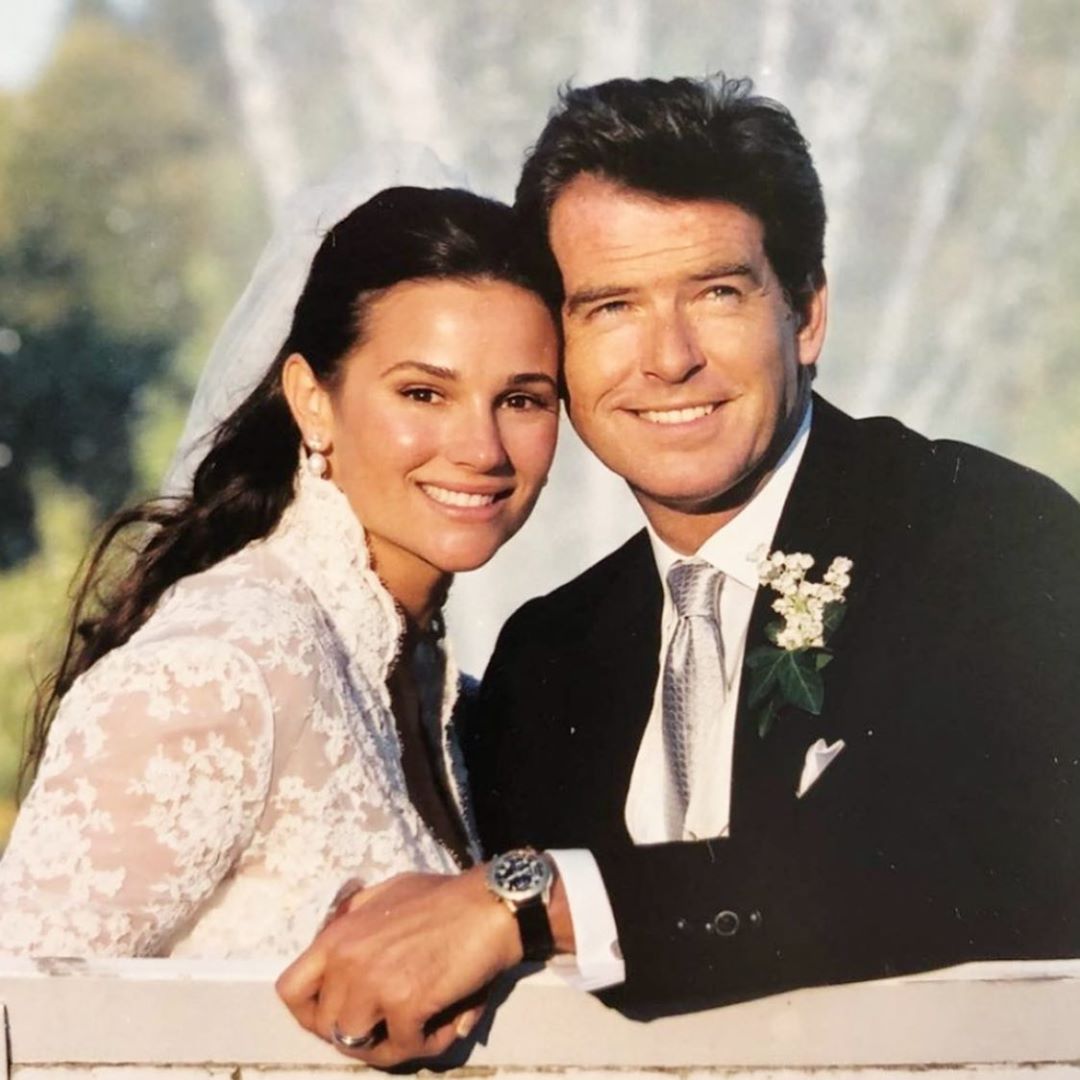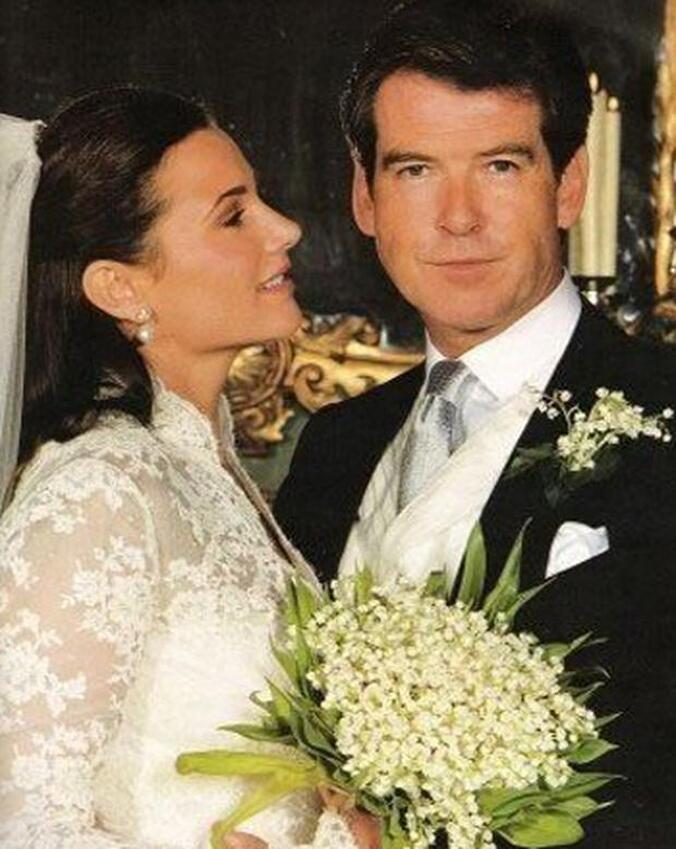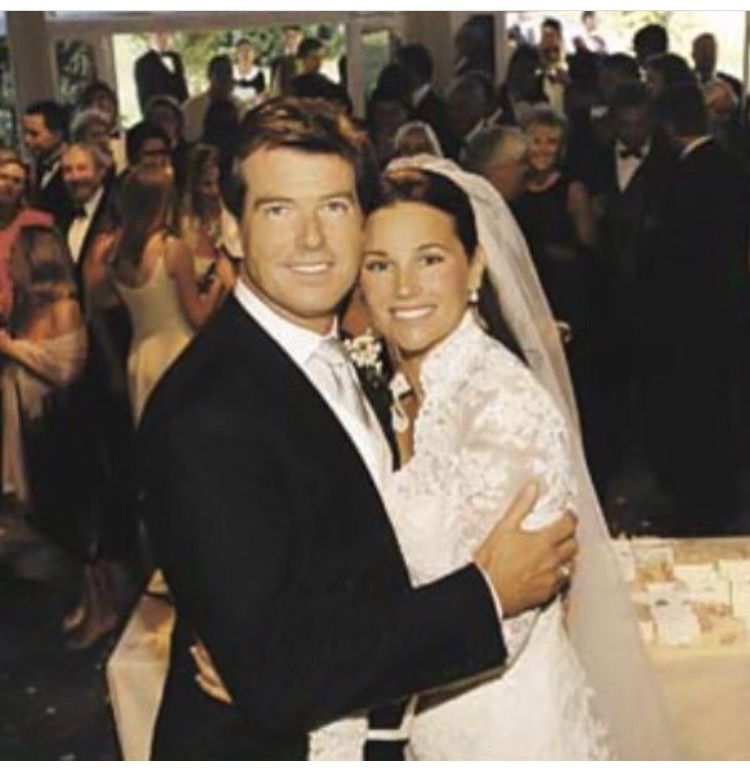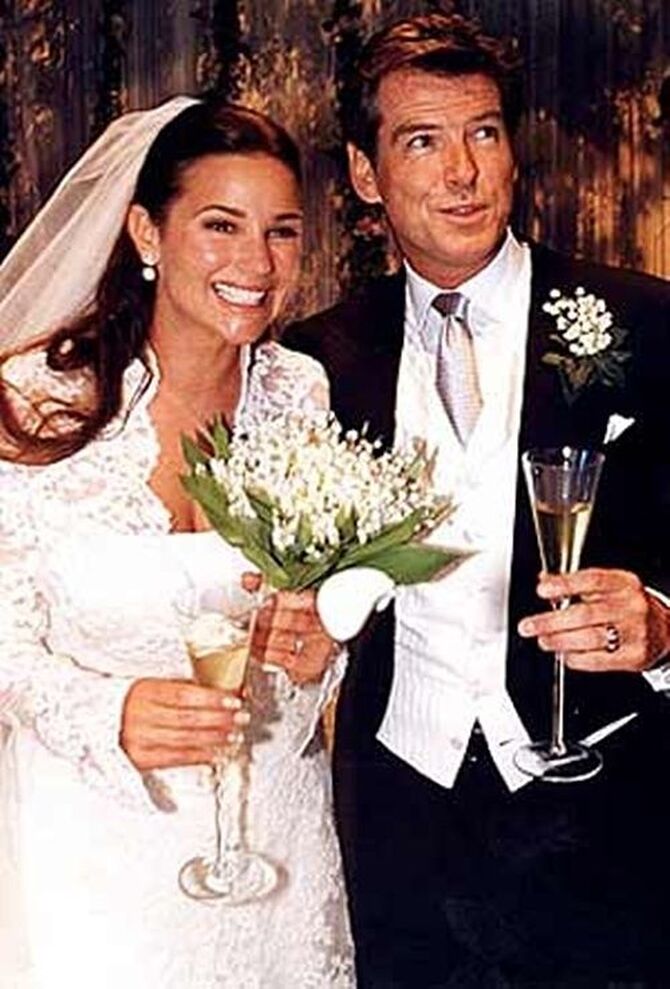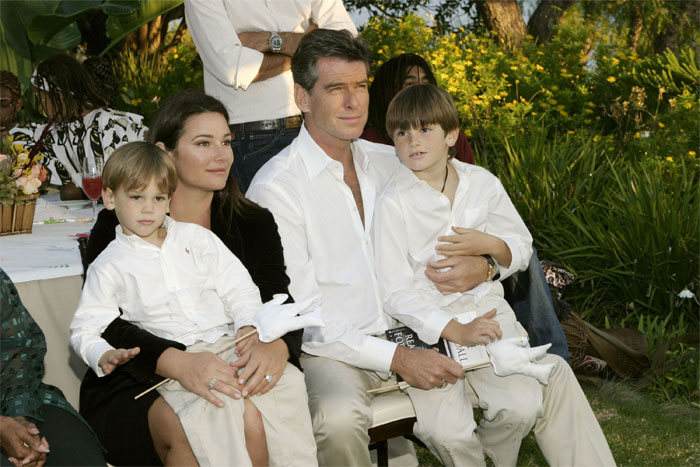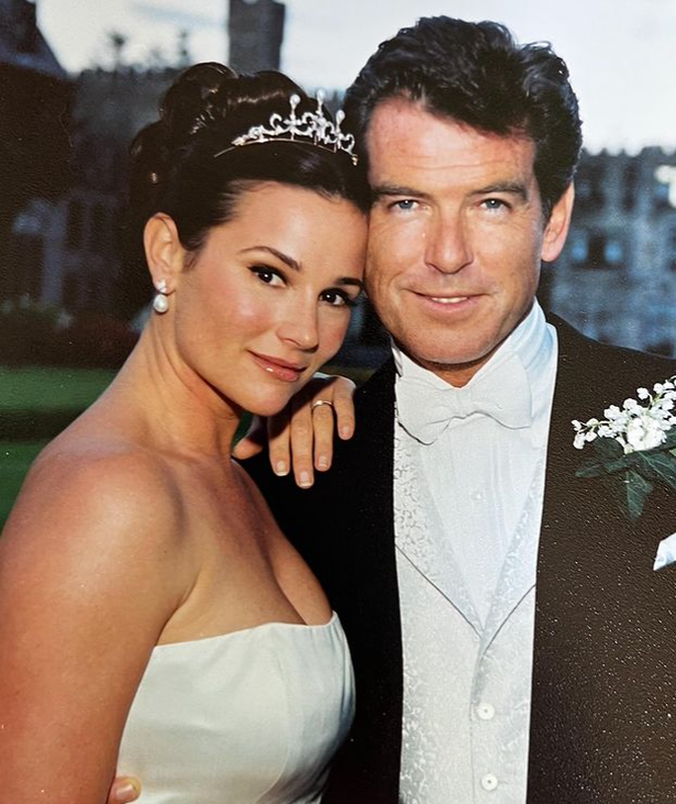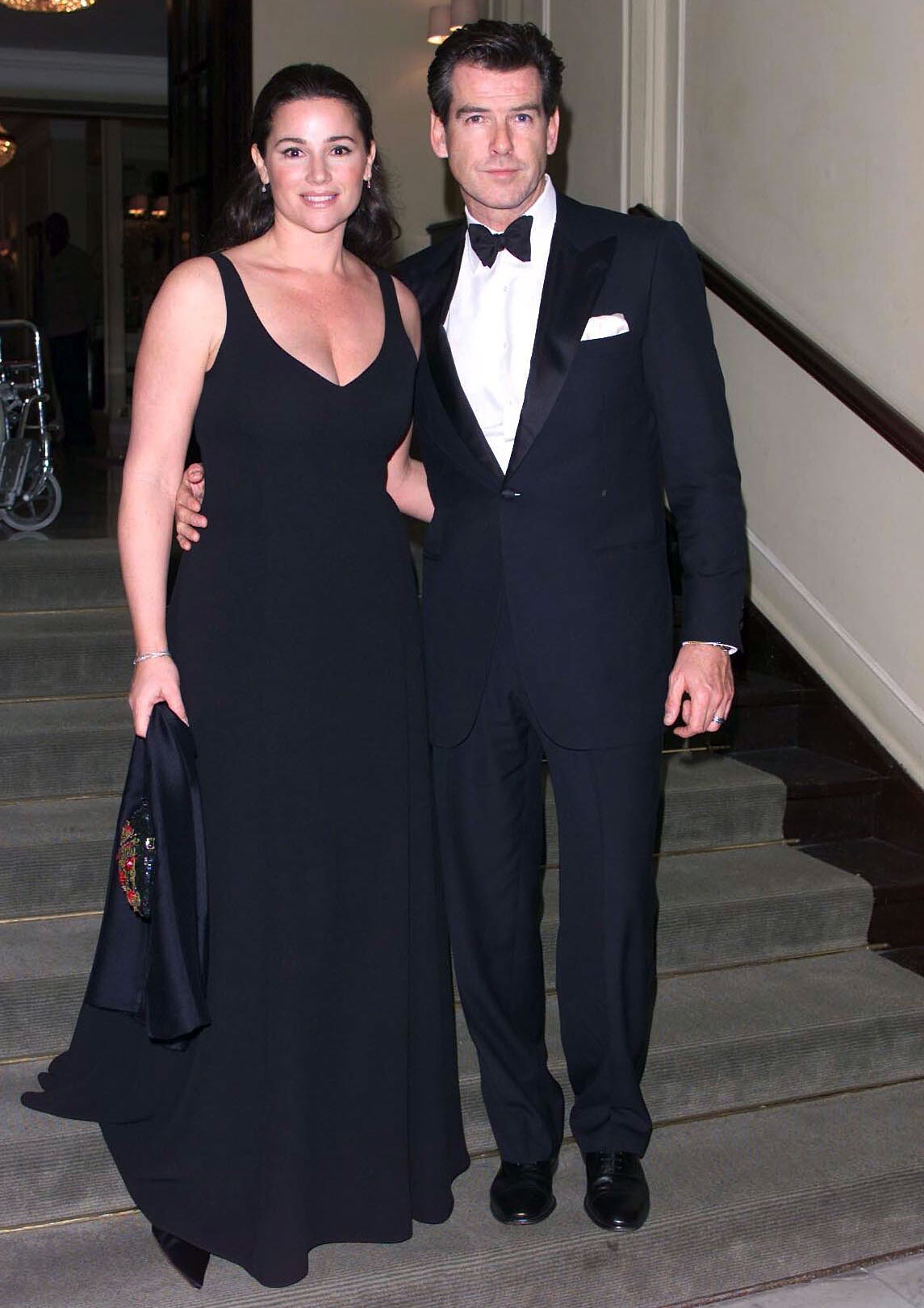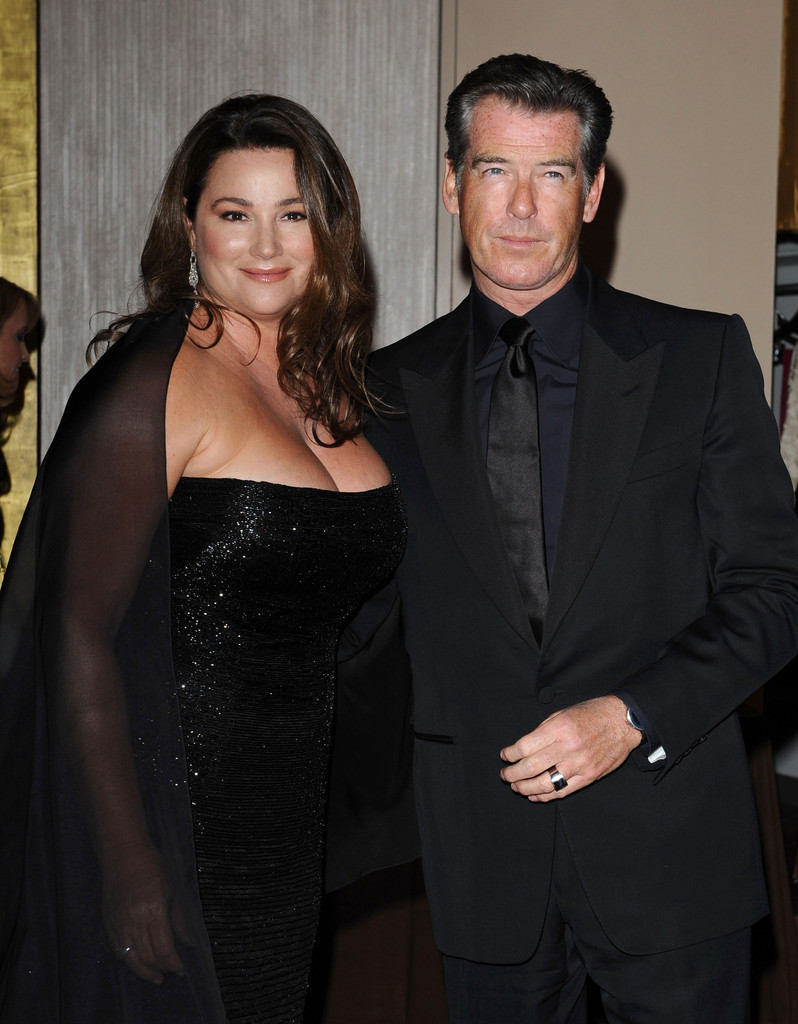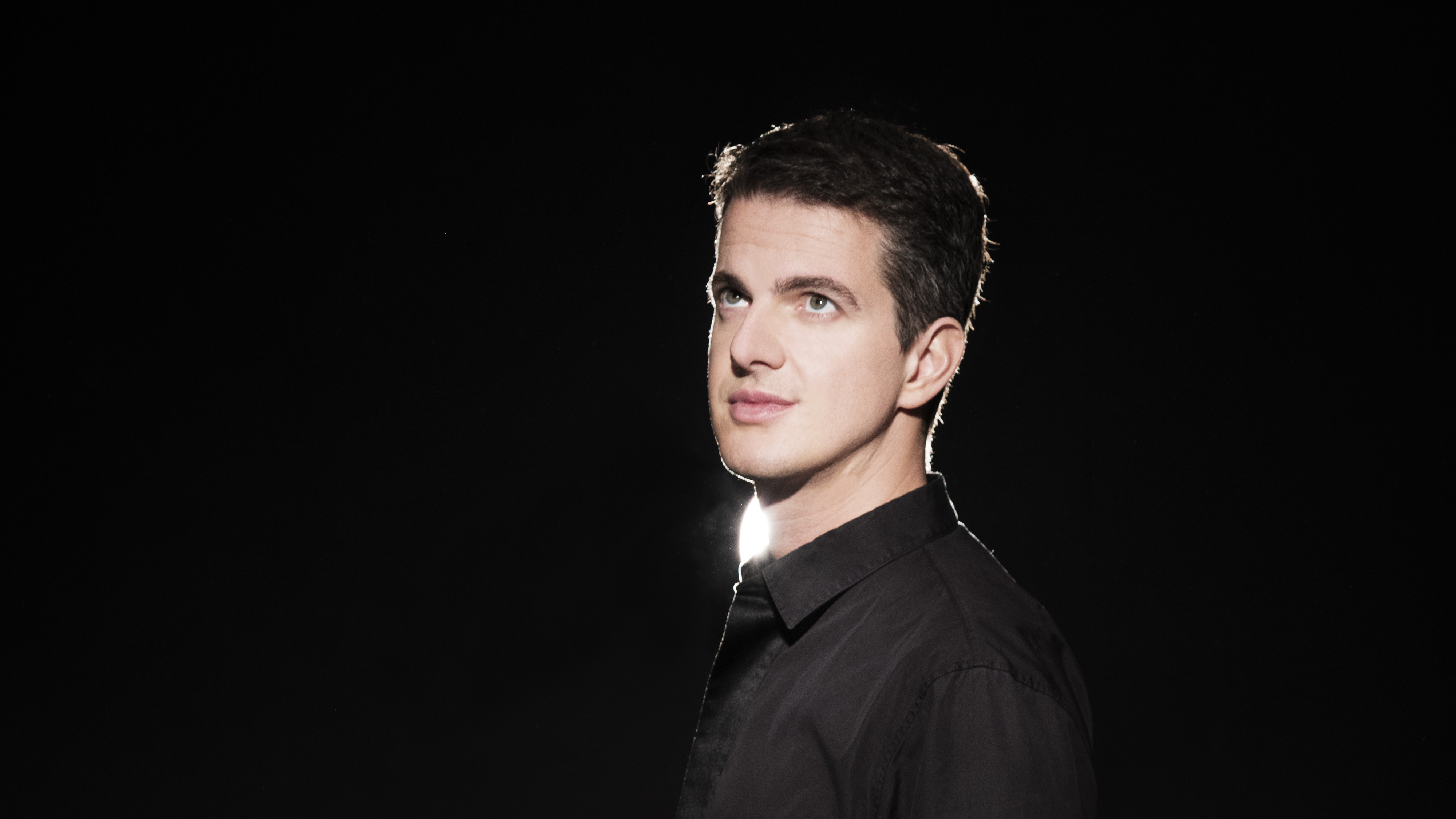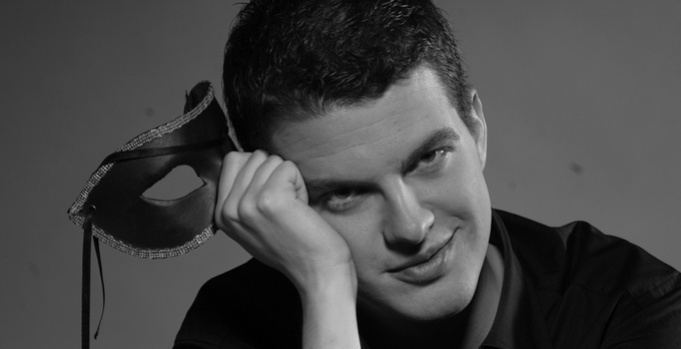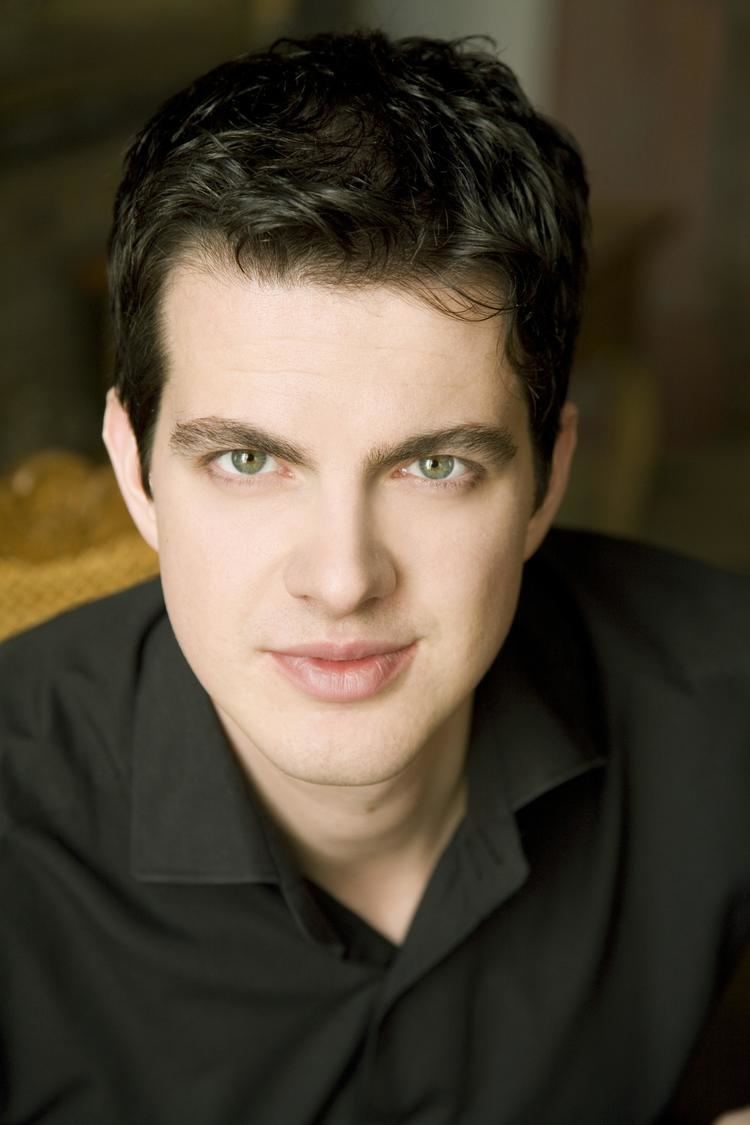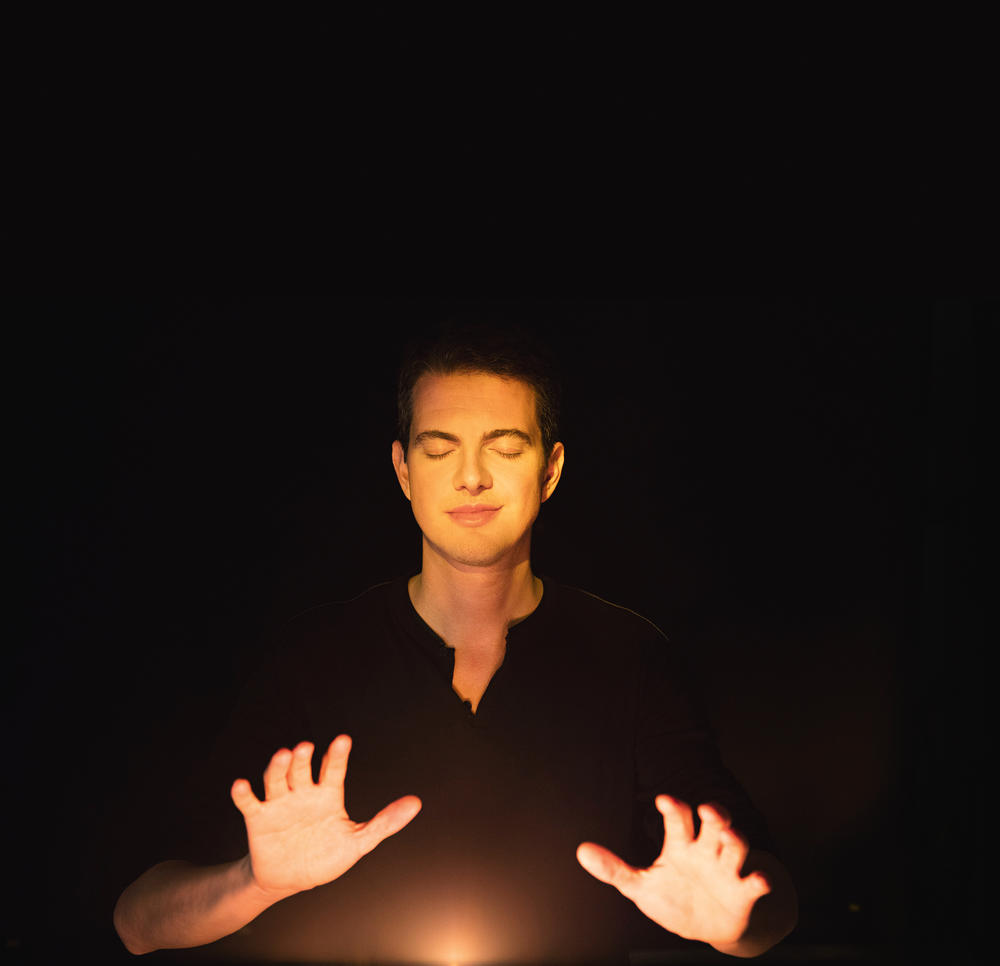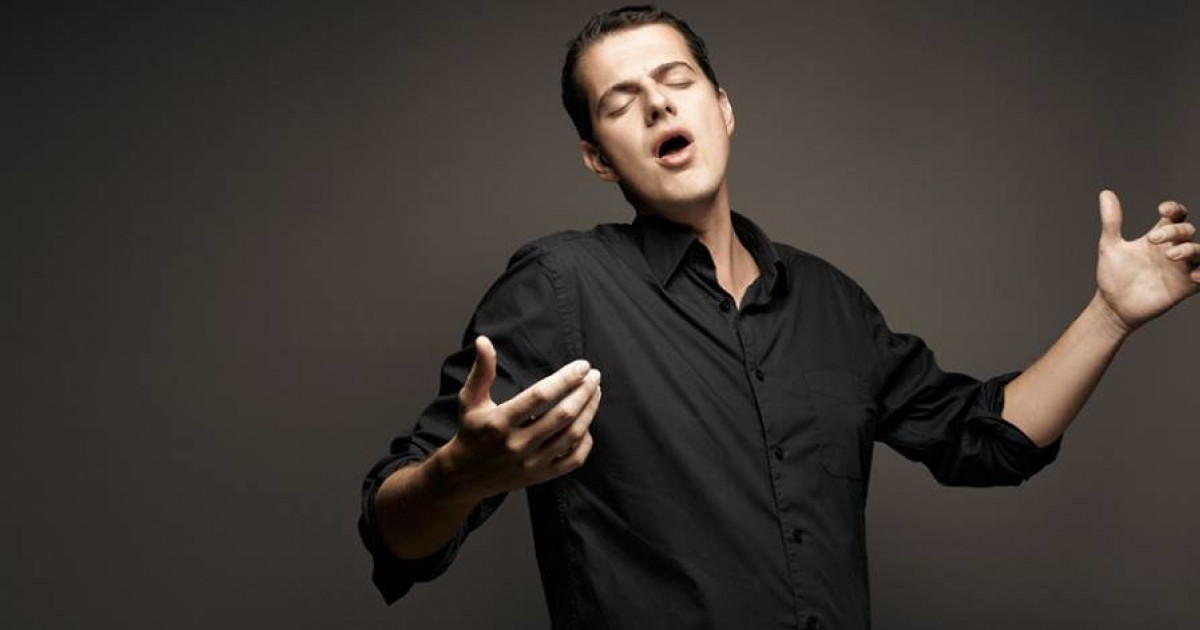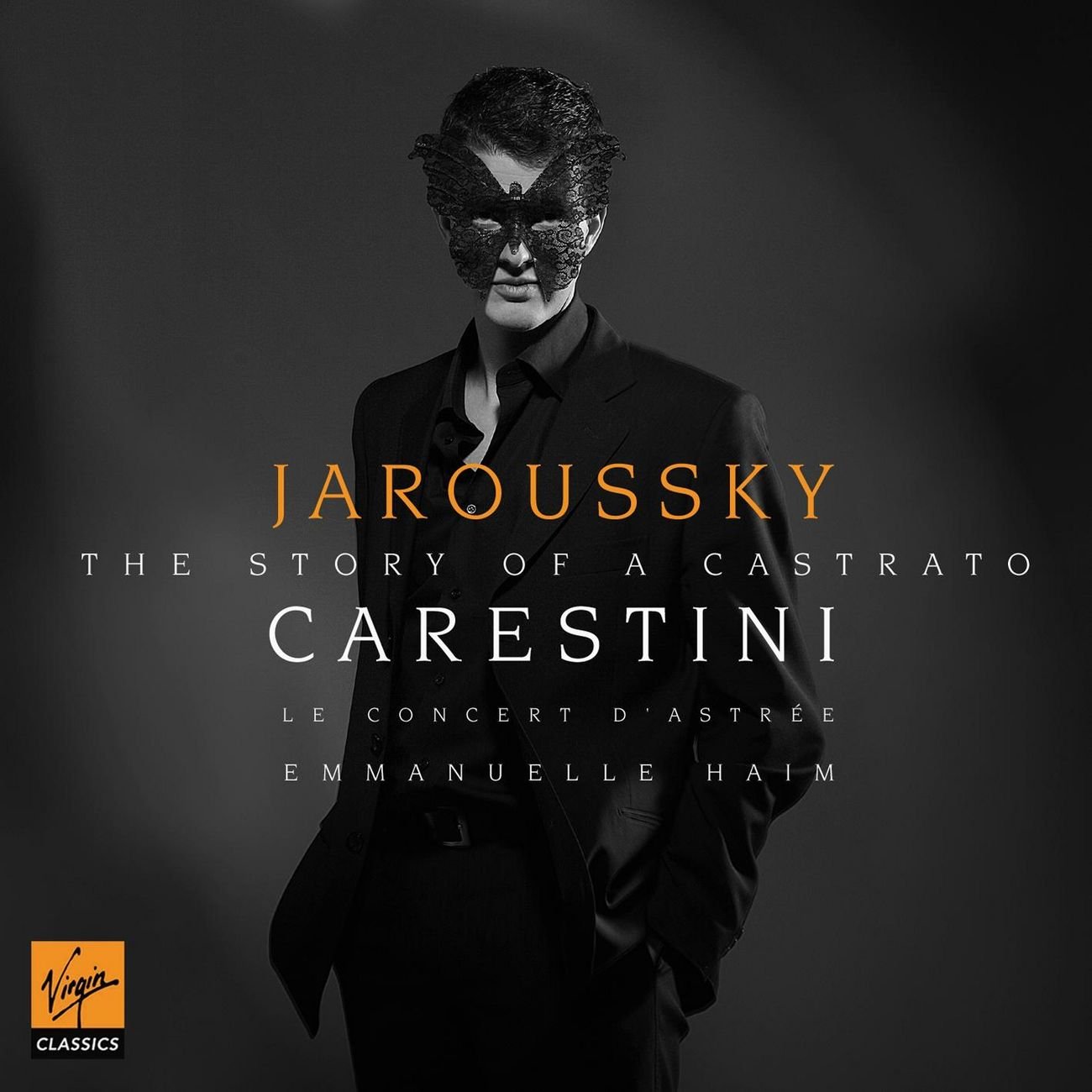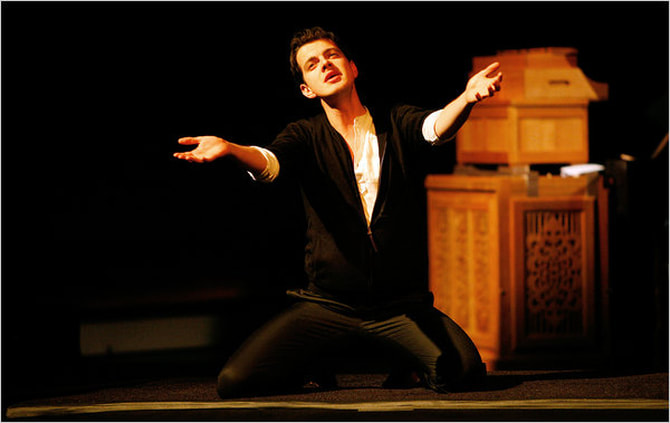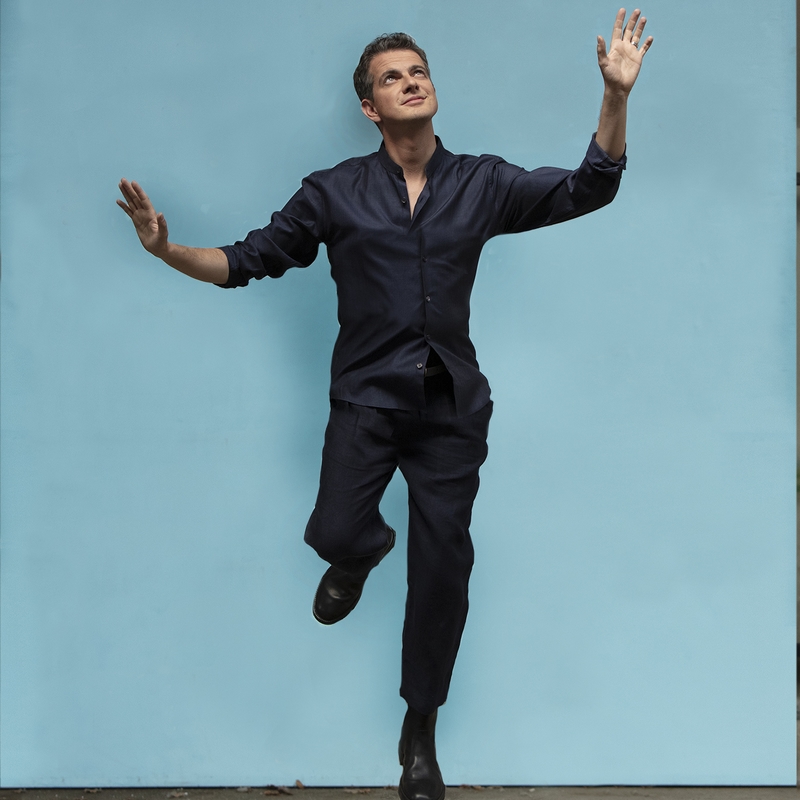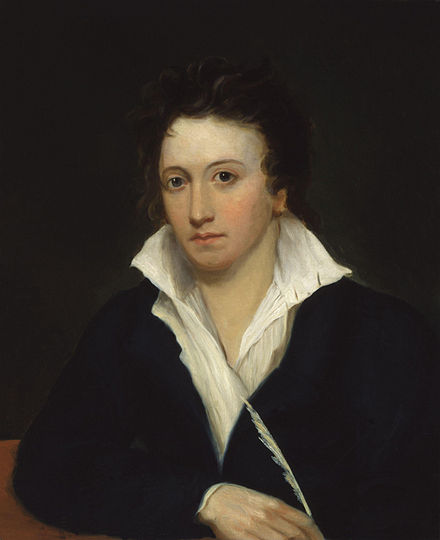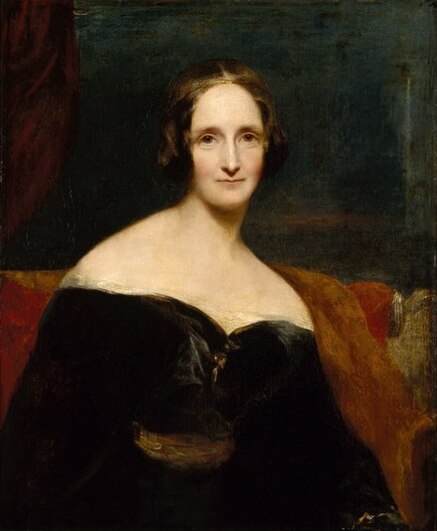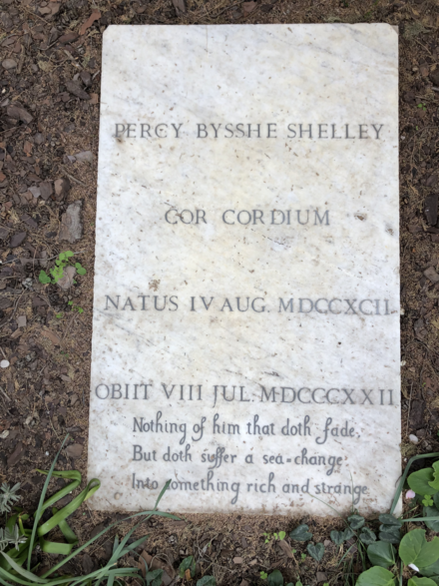|
Pierce Brendan Brosnan OBE (born 16 May 1953) is an Irish actor and film producer. He is best known as the fifth actor to play secret agent James Bond in the Bond film series, starring in four films from 1995 to 2002 (GoldenEye, Tomorrow Never Dies, The World Is Not Enough, and Die Another Day) and in multiple video games. After leaving school at age 16, Brosnan began training in commercial illustration and went on to attend the Drama Centre in London for three years. Following a stage acting career, he rose to popularity in the television series Remington Steele (1982–1987). After the conclusion of the series, Brosnan appeared in films such as the Cold War spy film The Fourth Protocol (1987) and the comedy Mrs. Doubtfire (1993). After achieving worldwide fame for his role as James Bond, Brosnan took the lead in other major films including the epic disaster adventure film Dante's Peak (1997), the remake of the heist film The Thomas Crown Affair (1999), and the musical comedy Mamma Mia! (2008), and its sequel Mamma Mia! Here We Go Again (2018). Brosnan has received two Golden Globe Award nominations, first for the miniseries Nancy Astor (1982) and next for the dark comedy film The Matador (2005). In 1996, along with American film producer Beau St. Clair, he formed a Los Angeles-based production company called Irish DreamTime. He is also known for his charitable work and environmental activism. In 1997, Brosnan received a star on the Hollywood Walk of Fame for his contributions to the film industry. In 2020, he was listed at No. 15 on The Irish Times' list of greatest Irish film actors. BiographyPierce Brosnan was born on 16 May 1953 at St. Mary's Hospital in Drogheda, County Louth, the only child of May (née Smith) and carpenter Thomas Brosnan. For 12 years, he lived in Navan, County Meath, and said in 1999 that he considers it to be his hometown. His father abandoned the family when Brosnan was an infant. When he was four years old, his mother moved to London to work as a nurse. From that point on, he was largely brought up by his maternal grandparents, Philip and Kathleen Smith. After their deaths, he lived with an aunt and then an uncle, but was subsequently sent to live in a boarding house run by a woman named Eileen. He later said, "Childhood was fairly solitary. I never knew my father. He left when I was an infant. [...] My mother was very courageous. She took the bold steps to go away and be a nurse in England. Basically wanting a better life for her and myself. My mother came home once a year, twice a year." Brosnan was brought up in a Catholic family, and left Ireland on 12 August 1964 and went to Scotland to be reunited with his mother and her new husband, William Carmichael, at their home in Longniddry. when he was 11 years old, his step father Carmichael took Brosnan to see a James Bond film for the first time: Goldfinger. They later moved back to London. When discussing his transition from Ireland to England, he said, "When you go to a very large city, a metropolis like London, as an Irish boy of 10, life suddenly moves pretty fast. [...] And you're Irish. And they make you feel it." His nickname at school was simply "Irish". After leaving school at 16, Brosnan decided to be a painter and began training in commercial illustration at Saint Martin's School of Art in London. While attending a rehearsal for a workshop at the Oval House, he saw a fire eater teaching people how to eat fire and decided to join in. He later trained for three years as an actor at the Drama Centre London. Describing the feeling of becoming an actor and the influence it had on his life, he said, "When I found acting, or when acting found me, it was a liberation. It was a stepping stone into another life, away from a life that I had, and acting was something I was good at, something which was appreciated. That was a great satisfaction in my life." Graduating from the Drama Centre in 1975, Brosnan began working as an acting assistant stage manager at the York Theatre Royal, making his acting debut in Wait Until Dark. Within six months, he was selected by playwright Tennessee Williams to play the role of McCabe in the British première of The Red Devil Battery Sign (billed as "Pierce Brosman"). His performance caused a stir in London and Brosnan still has the telegram sent by Williams, stating only "Thank God for you, my dear boy" Brosnan continued his career making brief appearances in films as well as early television performances. He became a television star in the United States with his leading role in the popular miniseries Manions of America. He followed this in 1982 with the BBC's nine-part miniseries Nancy Astor (which aired in America on Masterpiece Theatre) that dramatised the life of Lady Astor, the first woman to sit in the British Parliament. His portrayal of Robert Gould Shaw II garnered him a 1985 Golden Globe Award nomination for Best Supporting Actor. In 1982, Brosnan moved to Southern California and rose in popularity in the United States playing the title role in the NBC romantic, often-comedic detective series Remington Steele. The Washington Post noted that same year that Brosnan "could make it as a young James Bond." Pierce Brosnan met Australian actress Cassandra Harris through her stepson David Harris, the nephew of Richard Harris, shortly after leaving drama school. They began dating and bought a house in Wimbledon. The couple married in December 1980 and had one son together, Sean, who was born on 13 September 1983 and later became an actor. They also lived with Harris' children, Charlotte (1971–2013) and Chris, and Brosnan adopted them after their father Dermot Harris died in 1986; they subsequently took on his surname. Early in their relationship, Brosnan worked in West End plays and television films. Brosnan first met James Bond film producer Albert R. Broccoli in 1981 on the sets of For Your Eyes Only, where his wife Cassandra Harris appeared was cast as Countess Lisl von Schlaf, mistress to Milos Columbo. Broccoli said, "if he can act ... he's my guy" to inherit the role of Bond from Roger Moore. Afterwards, the couple secured a bank loan and moved to Southern California, where Brosnan was cast in the title role of the TV series Remington Steele, easing their financial worries. In 1986, NBC cancelled Remington Steele. As Brosnan was offered the role of James Bond, the publicity improved Remington Steele's ratings and it was renewed, contractually requiring Brosnan to return to the show. This caused Eon Productions to have to look elsewhere for the new 007. The producers instead hired Timothy Dalton for The Living Daylights (1987), and Licence to Kill (1989). While filming The Deceivers in Rajasthan in 1987, Brosnan's wife Harris became seriously ill. She was later diagnosed with ovarian cancer. After Brosnan left school, he pursued a career in art and began working as an illustrator, but eventually he abandoned his artwork to pursue a career in acting. Brosnan took up painting again during his Harris's illness as he found it therapeutic. "Sometimes dramatic moments affect the way you see yourself in the world…from a very hard time in my life, I started painting again and out came every colour I could imagine." Citing his influences as Picasso, Matisse, Bonnard and Kandinsky, Brosnan spends much of his free time between film shoots in front of his easel. "I am self taught, an enthusiastic painter as a friend of mine likes to say." He has continued painting since then, using spare time on set and at home. Cassandra Harris died on 28 December 1991 at age 43. Brosnan struggled to cope with her death: "When your partner gets cancer, then life changes. Your timetable and reference for your normal routines and the way you view life, all this changes. Because you're dealing with death. You're dealing with the possibility of death and dying. And it was that way through the chemotherapy, through the first-look operation, the second look, the third look, the fourth look, the fifth look. Cassie was very positive about life. I mean, she had the most amazing energy and outlook on life. It was and is a terrible loss, and I see it reflected, from time to time, in my children." On meeting her, he said, "What a beautiful looking woman. I never for an instant thought she was someone I'd spend 17 years of my life with. I didn't think of wooing her, or attempting to woo her; I just wanted to enjoy her beauty and who she was." Since Harris' death, Brosnan has been an advocate for cancer awareness and, in 2006, he served as spokesperson for Lee National Denim Day, a breast cancer fundraiser which raises millions of dollars and raises more money in a single day than any other breast cancer fundraiser. Legal disputes between the Bond producers and the studio over distribution rights resulted in the cancellation of a proposed third Dalton film in 1991 and put the Bond series on a hiatus for several years. After the legal issues had been resolved, Dalton decided not to return for a third film. On 7 June 1994, Brosnan was announced as the fifth actor to play Bond. Brosnan's wife Cassandra Harris had always wanted Brosnan to play James Bond. Four years after her death, Brosnan secured the role. Brosnan was signed for a three-film Bond deal with the option of a fourth. The first, 1995's GoldenEye, grossed US$350 million worldwide, the fourth highest worldwide gross of any film in 1995, making it the most successful Bond film since Moonraker, adjusted for inflation. In the Chicago Sun-Times, Roger Ebert gave the film 3 stars out of 4, saying that Brosnan's Bond was "somehow more sensitive, more vulnerable, more psychologically complete" than the previous ones, also commenting on Bond's "loss of innocence" since previous films. James Berardinelli described Brosnan as "a decided improvement over his immediate predecessor" with a "flair for wit to go along with his natural charm", but added that "fully one-quarter of Goldeneye is momentum-killing padding." In 1996, Brosnan formed a film production company called Irish DreamTime along with producing partner and longtime friend Beau St. Clair. Brosnan and St. Clair released Irish DreamTime's first production, The Nephew, in 1998. One year later, the company's second studio project, The Thomas Crown Affair, was released and met both critical and box office success. Brosnan returned to James Bond movies in 1997's Tomorrow Never Dies and 1999's The World Is Not Enough, which were also successful. In 2001 Pierce Brosnan married American journalist Keely Shaye Smith at Ballintubber Abbey in Ireland. They had met in Mexico in 1994. The couple have two sons together named Dylan and Paris. They reside primarily in Malibu, California, with a second American home in Hawaii and Irish residences in Dublin and County Meath. In 2002, Brosnan appeared for the fourth time as Bond in Die Another Day, receiving mixed reviews similarly to the former two, but was a success at the box office. Brosnan himself subsequently criticised many aspects of his fourth Bond movie. During the promotion, he mentioned that he would like to continue his role as James Bond: "I'd like to do another, sure. Connery did six. Six would be a number, then never come back." Brosnan asked Eon Productions, when accepting the role, to be allowed to work on other projects between Bond films. The request was granted, and for every Bond film, Brosnan appeared in at least two other mainstream films, including several he produced, playing a wide range of roles. Shortly after the release of Die Another Day, the media began questioning whether or not Brosnan would reprise the role for a fifth time. At that time, Brosnan was approaching his 50th birthday. In October 2004, Brosnan said he considered himself dismissed from the role. In February 2005 he posted on his website that he was finished with the role. On 14 October 2005, Daniel Craig took over the role. In 2009, Brosnan finished the well-received The Ghost Writer, playing a disgraced British Prime Minister, directed and produced by Roman Polanski. The film won a Silver Bear at the Berlin International Film Festival. Brosnan has been an Ambassador for UNICEF Ireland since 2001 and recorded a special announcement to mark the launch of UNICEF's "Unite for Children, Unite against AIDS" Campaign with Liam Neeson. He also would give to a trust to benefit "environmental, children's and women's health charities." through the sales of his artworks. In 2002, Pierce Brosnan was awarded an honorary degree from the Dublin Institute of Technology and, a year later, the University College Cork. In 2003, Brosnan was rewarded the Irish Film and Television Academy Lifetime Achievement Award for his contribution to Irish Film. In July 2003, Queen Elizabeth II made Brosnan an honorary Officer of the Order of the British Empire for his "outstanding contribution to the British film industry". As an Irish citizen, he is ineligible to receive the full OBE honour, which is awarded only to a citizen of the Commonwealth realms, but he is still allowed the letters "OBE" after his name. On 23 September 2004, he became an American citizen while retaining his Irish citizenship. He said, "My Irishness is in everything I do. It's the spirit of who I am, as a man, an actor, a father. It's where I come from." In May 2007, Brosnan and his wife Smith donated $100,000 to help replace a playground on the Hawaiian island of Kauai, where they own a house. In February 2013, Brosnan was awarded honorary patronage of the Dublin University Players society at Trinity College, Dublin. On 11 February 2015, Brosnan's $18 million Malibu home caught fire and sustained $1 million in damages. During the 30 minutes it took firefighters to extinguish the fire, flames destroyed the contents of the garage, including Brosnan's 2002 Aston Martin V12 Vanquish, and spread to a bedroom above it; no injuries were sustained. In 2021, Brosnan launched his first-ever NFT collection of digital artworks "Big Noise" - on a digital platform focusing on artist empowerment, sustainability and technical innovation - inspired by his painting "Earplugs" which he painted while filming the James Bond film GoldenEye, incorporating abstract movement, self-recorded sound elements, including his voice, and bespoke visuals.
0 Comments
Philippe Jaroussky (born 13 February 1978) is a French countertenor. He began his musical career with the violin, winning an award at the Versailles conservatory, and then took up the piano before turning to singing. Unusually for a countertenor, Jaroussky performs entirely in falsetto register. He has said that his natural singing voice is in the baritone range. Philippe Jaroussky est un contreténor français né le 13 février 1978 à Maisons-Laffitte (Yvelines, France) BiographyJaroussky was born in Maisons-Laffitte. His great-grandfather was a Russian émigré who fled from the Bolshevik Revolution. Jaroussky was inspired to sing by the Martinique-born countertenor Fabrice di Falco. He received his diploma from the Early Music Faculty of the Conservatoire de Paris. Since 1996, he has studied singing with Nicole Fallien. He cofounded the ensemble Artaserse in 2002, and has also often performed with the Ensemble Matheus under Jean-Christophe Spinosi and with L'Arpeggiata under Christina Pluhar. Jaroussky is openly gay and has been in a relationship with a "very supportive" non-musician since 2007. His boyfriend sometimes travels with him. He received the Révélation Artiste lyrique in the 2004 Victoires de la musique classique and was Artiste lyrique de l'année in the 2007 and 2010 edition. Jaroussky was awarded "The Best Singer of the Year" at the Echo Klassik Awards, 2008 and 2016. On 29 July 2016 he performed David Bowie's "Always Crashing in the Same Car" in the David Bowie Prom, a tribute to the late singer as part of the Proms at the Royal Albert Hall, London. In September 2017, as a part of the opening of La Seine Musicale, Jaroussky launched his education program, Académie musicale Philippe Jaroussky. Jaroussky was named Chevalier of the Ordre des Arts et des Lettres in 2009 and was promoted to the rank of Officier in 2019. The asteroid 332183 Jaroussky was named after him. On 13 November 2019, which marked the twentieth anniversary since his debut, a wax figure of him sculpted by Éric Saint-Chaffray was inaugurated at the Musée Grévin with his concert, where he also received the medal of the Ordre des Arts et des Lettres. In 2020, he was awarded Victoire d'honneur in the Victoires de la musique classique. BiographiePhilippe Jaroussky découvre sa passion pour la musique au collège à Sartrouville grâce à Gérard Bertram, professeur de musique, qui fait écrire et interpréter des chansons à ses élèves. À la suite de cette heureuse expérience, il commence l'étude du violon à 11 ans. Il obtient un premier prix au conservatoire national de région de Versailles. Il s'intéresse ensuite au piano, souhaitant trouver dans son étude les moyens de comprendre plus en profondeur la composition et la ligne musicale. À l'âge de 18 ans, il assiste à un concert de musique baroque dans une église de Paris où chante le contreténor Fabrice di Falco. Troublé par cette voix, il décide de rencontrer son professeur de chant, Nicole Fallien, avec laquelle il travaille encore. Philippe Jaroussky explique son choix concernant le développement de sa tessiture de tête grâce à son aisance et son plaisir d'interprétation dans ce registre. Il précise que la décision fut prise en accord avec son professeur de chant, révélant ainsi à quel point le travail d'une voix cherche à mettre en valeur ses particularités. Sa carrière commence tôt, en 1999. Lors d'un stage de chant à Royaumont en septembre, il est choisi par le contreténor Gérard Lesne pour incarner Ismaele, le fils de Sedecia (chanté par Gérard Lesne) dans l'oratorio Il Sedecia, re di Gerusalemme d'Alessandro Scarlatti. Il a 21 ans et seulement trois ans de chant derrière lui Le 14 novembre 1999, le producteur Philippe Maillard organise son premier récital à Paris au théâtre Grévin, où il interprète des airs de Serse et d’Ariodante de Haendel. Il acquiert en 2001 son diplôme de chant au département de musique ancienne du conservatoire à rayonnement régional de Paris avec les félicitations du jury. En 2002, il crée l'ensemble Artaserse, afin d'explorer en toute liberté les partitions qui l'intéressent. L'ensemble était constitué à l'origine de Claire Antonini au théorbe, Nanja Breedijk à la harpe baroque, Christine Plubeau à la viole de gambe et Yoko Nakamura au clavecin et à l'orgue. Début 2008, il publie deux albums en collaboration, l'un avec Emmanuelle Haïm et Natalie Dessay, où ils proposent une interprétation du Magnificat de Bach et du Dixit Dominus de Haendel, l'autre avec Marie-Nicole Lemieux et Jean-Christophe Spinosi, où il chante le Nisi Dominus de Vivaldi. En février 2009, avec Opium Philippe Jaroussky reprend des mélodies françaises qu'il affectionne de Reynaldo Hahn, Cécile Chaminade, Gabriel Fauré ou encore Guillaume Lekeu. Les musiciens qui l'accompagnent sont Jérôme Ducros (piano), Renaud Capuçon (violon), Gautier Capuçon (violoncelle) et Emmanuel Pahud (flûte). Son disque La dolce fiamma - airs de castrats oubliés, sorti le 2 novembre 2009, reprend des airs composés par Jean-Chrétien Bach. Le contreténor est accompagné par Le Cercle de l'Harmonie, dirigé par le jeune chef d'orchestre Jérémie Rhorer. Caldara in Vienna (octobre 2010) est consacré à des airs d'Antonio Caldara écrits pour les castrats italiens du settecento.
En 2017, il crée l’Académie musicale Philippe Jaroussky, qui a lancé son programme d’actions dans le cadre de l’ouverture de La Seine musicale. Elle a pour vocation principale d’accompagner gratuitement sur le long terme (plusieurs années) et sur différents axes (chant et pratique instrumentale) une centaine de jeunes filles et garçons (chaque saison) qui n’ont pas nécessairement les moyens financiers ou techniques de faire de la musique. En intervenant auprès de deux classes d’âge distinctes, l’Académie musicale permet l’accompagnement à la formation musicale d’un jeune public de 7-12 ans (avant l’entrée au conservatoire) mais aussi pour les jeunes adultes (18-25 ans) fraîchement diplômés qui souhaitent bénéficier d’un accompagnement pour s’insérer professionnellement dans le domaine de la musique classique. L’Académie musicale Philippe Jaroussky, en complément du travail primordial des conservatoires, souhaite donc mettre en œuvre, en partenariat avec les acteurs territoriaux, des moyens supplémentaires pour donner à ces jeunes l’accès à la culture à travers la pratique instrumentale, la pratique du chant et ce pour les accompagner dans leur insertion sociale et/ou professionnelle. Percy Bysshe Shelley (4 August 1792 – 8 July 1822) was one of the major English Romantic poets. American literary critic Harold Bloom describes him as "a superb craftsman, a lyric poet without rival, and surely one of the most advanced sceptical intellects ever to write a poem." A radical in his poetry as well as in his political and social views, Shelley did not achieve fame during his lifetime, but recognition of his achievements in poetry grew steadily following his death and he became an important influence on subsequent generations of poets including Browning, Swinburne, Hardy and Yeats. Shelley’s critical reputation fluctuated in the twentieth century, but in recent decades he has achieved increasing critical acclaim for the sweeping momentum of his poetic imagery, his mastery of genres and verse forms, and the complex interplay of sceptical, idealist, and materialist ideas in his work. Among his best-known works are "Ozymandias" (1818), "Ode to the West Wind" (1819), "To a Skylark" (1820), and the political ballad “The Mask of Anarchy” (1819). His other major works include the verse drama The Cenci (1819) and long poems such as Alastor, or The Spirit of Solitude (1815), Julian and Maddalo (1819), Adonais (1821), Prometheus Unbound (1820)—widely considered his masterpiece--Hellas (1822), and his final, unfinished work, The Triumph of Life (1822). Shelley also wrote prose fiction and a quantity of essays on political, social, and philosophical issues. Much of this poetry and prose was not published in his lifetime, or only published in expurgated form, due to the risk of prosecution for political and religious libel. From the 1820s, his poems and political and ethical writings became popular in Owenist, Chartist, and radical political circles and later drew admirers as diverse as Karl Marx, Mahatma Gandhi, and George Bernard Shaw. Shelley's life was marked by family crises, ill health, and a backlash against his atheism, political views and defiance of social conventions. He went into permanent self-exile in Italy in 1818, and over the next four years produced what Leader and O'Neill call "some of the finest poetry of the Romantic period". His second wife, Mary Shelley, was the author of Frankenstein. He died in a boating accident in 1822 at the age of twenty-nine. BiographyPercy Bysshe Shelley was born on 4 August 1792 at Field Place, Broadbridge Heath, near Horsham, West Sussex, England. He was the eldest son of Sir Timothy Shelley (1753–1844), a Whig Member of Parliament for Horsham and his wife, Elizabeth Pilfold (1763–1846), the daughter of a successful butcher. He had four younger sisters and one much younger brother. Shelley’s early childhood was sheltered and mostly happy. He was particularly close to his sisters and his mother, who encouraged him to hunt, fish and ride. At age six, he was sent to a day school run by the vicar of Warnham church, where he displayed an impressive memory and gift for languages. In 1802 he entered the Syon House Academy of Brentford, Middlesex, where he was bullied and unhappy and sometimes responded with violent rage. He also began suffering from the nightmares, hallucinations and sleep walking that were to periodically afflict him throughout his life. Shelley developed an interest in science which supplemented his voracious reading of tales of mystery, romance and the supernatural. During his holidays at Field Place, his sisters were often terrified at being subjected to his experiments with gunpowder, acids and electricity. In 1804, Shelley entered Eton College, a period which he later recalled with loathing. He was subjected to particularly severe mob bullying which the perpetrators called "Shelley-baits". His interest in the occult and science continued, and contemporaries describe him giving an electric shock to a master, blowing up a tree stump with gunpowder and attempting to raise spirits with occult rituals. In his senior years, Shelley came under the influence of a part-time teacher, Dr James Lind, who encouraged his interest in the occult and introduced him to liberal and radical authors. In his last term, his first novel Zastrozzi appeared and he had established a following among his fellow students. Prior to enrolling for University College, Oxford in October 1810, Shelley completed Original Poetry by Victor and Cazire (written with his sister Elizabeth), the verse melodrama The Wandering Jew and the gothic novel St. Irvine; or, The Rosicrucian: A Romance (published 1811). At Oxford Shelley attended few lectures, instead spending long hours reading and conducting scientific experiments in the laboratory he set up in his room. He met a fellow student, Thomas Jefferson Hogg, who became his closest friend. Shelley became increasingly politicised under Hogg's influence, developing strong radical and anti-Christian views which were dangerous in the reactionary political climate prevailing during Britain's war with Napoleonic France. In the winter of 1810–1811, Shelley published a series of anonymous political poems and tracts, resulting in his expulsion from Oxford on 25 March 1811, along with Hogg. Hearing of his son's expulsion, Shelley's father threatened to cut all contact with Shelley unless he agreed to return home and study under tutors appointed by him. Shelley's refusal to do so led to a falling-out with his father. In late December 1810, Shelley had met Harriet Westbrook, a pupil at the same boarding school as Shelley's sisters. They started to correspond frequently that winter. Shelley’s infatuation with Harriet developed in the months following his expulsion, when he was under severe emotional strain due to the conflict with his family, his bitterness over the breakdown of his romance with his cousin Harriet Grove, and his unfounded belief that he might be suffering from a fatal illness. Harriet Westbrook’s elder sister Eliza, to whom Harriet was very close, encouraged the young girl's romance with Shelley. Shelley’s correspondence with Harriet intensified in July, while he was holidaying in Wales, and in response to her urgent pleas for his protection, he returned to London in early August. Putting aside his philosophical objections to matrimony, he left with the sixteen-year-old Harriet for Edinburgh on 25 August, and they were married there on the 28th. Hearing of the elopement, Harriet’s father, John Westbrook, and Shelley’s father, Timothy, cut off the allowances of the bride and groom. Surviving on borrowed money, Shelley tried to settle matters with his father, without any success, while Harriet's sister Eliza moved in with them. Shelley wrote to William Godwin, author of Political Justice, offering himself as his devoted disciple. Godwin advised Shelley to reconcile with his father, become a scholar before he published anything else, and give up his avowed plans for political agitation in Ireland. At this time Shelley was also involved in an intense platonic relationship with Elizabeth Hitchener, a 28-year-old unmarried schoolteacher of advanced views, with whom he had been corresponding. Hitchener, whom Shelley called the "sister of my soul" and "my second self", became his confidante and intellectual companion as he developed his views on politics, religion, ethics and personal relationships. Shelley also met his father’s patron, Charles Howard, 11th Duke of Norfolk, who helped secure the reinstatement of Shelley’s allowance. With Harriet’s allowance also restored, Shelley now had the funds for his Irish venture. On 23 June Harriet gave birth to a girl, Eliza Ianthe Shelley, and in the following months the relationship between Shelley and his wife deteriorated. Shelley resented the influence Harriet’s sister had over her, while Harriet was alienated by Shelley’s close friendship with an attractive widow, Harriet Boinville, and her daughter Cornelia Turner. Following Ianthe’s birth, the Shelleys moved frequently across London, Wales, the Lake District, Scotland and Berkshire to escape creditors and search for a home. In March 1814, Shelley remarried Harriet in London to settle any doubts about the legality of their Edinburgh wedding and secure the rights of their child. Nevertheless, the Shelleys lived apart for most of the following months, and Shelley reflected bitterly on: "my rash & heartless union with Harriet". In May 1814, Shelley began visiting his mentor Godwin almost daily, and soon fell in love with Mary, the sixteen-year-old daughter of Godwin. Shelley and Mary declared their love for each other during a visit to her mother’s grave. When Shelley told Godwin that he intended to leave Harriet and live with Mary, his mentor banished him from the house and forbade Mary from seeing him. Shelley and Mary eloped to Europe on 28 July, taking Mary’s step-sister Claire Clairmont with them. Before leaving, Shelley had secured a loan of £3,000 but had left most of the funds at the disposal of Godwin and Harriet, who was now pregnant. Shelly and Mary returned to England on 13 September, and Shelly spent the next few months trying to raise loans and avoid bailiffs. Mary was pregnant, lonely, depressed and ill. Her mood was not improved when she heard that on 30 November Harriet had given birth to Charles Bysshe Shelley, heir to the Shelley fortune and baronetcy. In early January 1815, Shelley’s grandfather, Sir Bysshe died leaving an estate worth £220,000. However, the settlement of the estate, and a financial settlement between Shelley and his father (now Sir Timothy), wasn’t concluded until April the following year. In February 1815, Mary gave premature birth to a baby girl who died ten days later, deepening her depression. In August Shelley and Mary moved to Bishopsgate where Shelley worked on Alastor, a long poem in blank verse based on the myth of Narcissus and Echo. Alastor was published in an edition of 250 in early 1816 to poor sales and largely unfavourable reviews from the conservative press. On 24 January 1816, Mary gave birth to William Shelley. Shelley was delighted to have another son, but was suffering from the strain of prolonged financial negotiations with his father, Harriet and William Godwin. Shelley showed signs of delusional behaviour and was contemplating an escape to the continent. Mary’s step-sister Claire Clairmont, who had affair with Lord Byron, introduced him to Shelley in Geneva, where Shelley, Byron and the others engaged in discussions about literature, science and "various philosophical doctrines". Shelley and Byron then took a boating tour around Lake Geneva, which inspired Shelley to write his "Hymn to Intellectual Beauty", his first substantial poem since Alastor. In January 1817 Claire gave birth to a daughter by Byron who she named Alba, but later renamed Allegra in accordance with Byron's wishes. Shelley made provision for Claire and the baby in his will. In December 1816 Shelley's estranged wife Harriet drowned herself in the Serpentine. Harriet, pregnant and living alone at the time, believed that she had been abandoned by her new lover. In her suicide letter she asked Shelley to take custody of their son Charles but to leave their daughter in her sister Eliza's care. Shelley married Mary Godwin on 30 December, despite his philosophical objections to the institution. In March 1817 the Shelleys moved to the village of Marlow, Buckinghamshire. The Shelley household included Claire and her baby Allegra, both of whose presence was resented by Mary. Shelley's generosity with money and increasing debts also led to financial and marital stress, as did Godwin's frequent requests for financial help. On 2 September Mary gave birth to a daughter, Clara Everina Shelley. Soon after, Shelley left for London with Claire, which increased Mary's resentment towards her step-sister. In December 1817 he wrote "Ozymandias", which is considered to be one of his finest sonnets. On 12 March 1818 the Shelleys and Claire left England to escape its "tyranny civil and religious". A doctor had also recommended that Shelley go to Italy for his chronic lung complaint, and Shelley had arranged to take Claire's daughter, Allegra, to her father Byron who was now in Venice. On their journey to Venice, Shelly and Mary's baby daughter Clara became seriously ill on the journey and died on 24 September in Venice. Following Clara's death, Mary fell into a long period of depression and emotional estrangement from Shelley. The Shelleys moved to Naples than Rome. In Rome, Shelley was in poor health, probably suffering from nephritis and tuberculosis which later was in remission. Nevertheless, he made significant progress on three major works: Julian and Maddalo, Prometheus Unbound and The Cenci. Julian and Maddalo is an autobiographical poem which explores the relationship between Shelley and Byron and analyses Shelley's personal crises of 1818 and 1819. The poem was completed in the summer of 1819, but was not published in Shelley's lifetime. Prometheus Unbound is a long dramatic poem inspired by Aeschylus's retelling of the Prometheus myth. It was completed in late 1819 and published in 1820. The Cenci is a verse drama of rape, murder and incest based on the story of the Renaissance Count Cenci of Rome and his daughter Beatrice. Shelley completed the play in September and the first edition was published that year. It was to become one of his most popular works and the only one to have two authorised editions in his lifetime. Shelley's three-year-old son William died in June, probably of malaria. The new tragedy caused a further decline in Shelley's health and deepened Mary's depression. On 12 November, Mary gave birth to a boy, Percy Florence Shelley in Florence. Around the time of Percy's birth, the Shelleys met Sophia Stacey, who was a ward of one of Shelley's uncles and was staying at the same pension as the Shelleys. Sophia, a talented harpist and singer, formed a friendship with Shelley while Mary was preoccupied with her newborn son. Shelley wrote at least five love poems and fragments for Sophia including "Song written for an Indian Air". The Shelleys moved to Pisa in January 1820. Following the death of Keats in 1821, Shelley wrote Adonais, which Harold Bloom considers one of the major pastoral elegies. The poem was published in Pisa in July 1821, but sold few copies. In November 1821 Byron moved into Villa Lanfranchi in Pisa, just across the river from the Shelleys. Byron became the centre of the "Pisan circle" which was to include Shelley, Thomas Medwin, Edward Williams and Edward Trelawny. In the early months of 1822 Shelley became increasingly close to Jane Williams, who was living with her partner Edward Williams in the same building as the Shelleys. Shelley wrote a number of love poems for Jane. Mary almost died from a miscarriage on 16 June, her life only being saved by Shelley's effective first aid. During this time, Shelley was writing his final major poem, the unfinished The Triumph of Life, which Harold Bloom has called "the most despairing poem he wrote". On 1 July, Shelley and Edward Williams sailed in Shelley's new boat the Don Juan, custom-built for him in Genoa, to Livorno where Shelley met Leigh Hunt and Byron in order to make arrangements for a new journal, The Liberal. After the meeting, on 8 July, Shelley, Williams and their boat boy sailed out of Livorno for Lerici. A few hours later, the Don Juan and its inexperienced crew were lost in a storm. Shelley's badly-decomposed body washed ashore at Viareggio ten days later and was identified by Trelawny from the clothing and a copy of Keats's Lamia in a jacket pocket. On 16 August, his body was cremated on a beach near Viareggio and the ashes were buried in the Protestant Cemetery of Rome. Shelley's ashes were reburied in a different plot at the cemetery in 1823. His grave bears the Latin inscription Cor Cordium (Heart of Hearts), and a few lines of "Ariel's Song" from Shakespeare's The Tempest:
Nothing of him that doth fade But doth suffer a sea change Into something rich and strange. When Shelley's body was cremated on the beach, his "unusually small" heart resisted burning, possibly due to calcification from an earlier tubercular infection. Trelawny gave the scorched heart to Hunt, who preserved it in spirits of wine and refused to hand it over to Mary. But he finally relented and the heart was eventually buried either at St Peter's Church, Bournemouth or in Christchurch Priory. |
Categories
All
Archives
December 2023
|
